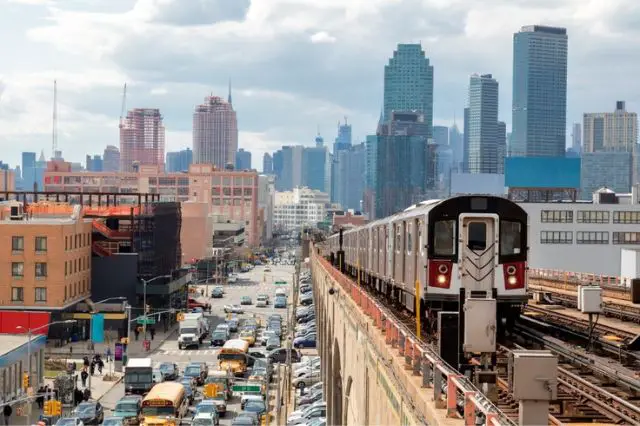Building the Future: Why Americans Should Rally Behind Infrastructure Investment

As the United States stands on the precipice of the future, the rallying cry for substantial infrastructure investment echoes louder than ever. It is not merely a call to action; it is an investment in the very fabric of the nation. This article aims to dissect the multifaceted reasons why Americans should fervently support this initiative, examining key aspects such as economic stimulus, resilience to natural disasters, workforce development, quality of life, and community development.
Economic stimulus: Revving up the engine of prosperity
First, a potent machine for economic prosperity lies at the core of infrastructure investment. Beyond the visible construction sites and towering structures, these projects serve as catalysts that propel both local and national economies forward. The ripple effects of such investments are profound, creating a dynamic cycle of economic growth.
Moreover, as shovels break ground and construction crews mobilize, jobs are created within the construction sector and across a spectrum of related industries. Engineers, architects, suppliers, and manufacturers all play integral roles, contributing to the burgeoning workforce engaged in these endeavors. This surge in employment, in turn, has a direct and immediate impact on local economies. Accordingly, families benefit from newfound income, and consumer spending experiences an uptick which revitalizes local businesses.
Resilience to natural disasters: Building more robustly and building smarter
In an era marked by the increasing frequency and intensity of natural disasters, the imperative to fortify our infrastructure against these challenges has never been more pressing. In addition, investing in resilient infrastructure is not just a prudent response to the immediate threats posed by hurricanes, floods and earthquakes but a strategic commitment to building stronger,smarter communities.
Building stronger begins with an understanding that the costs incurred during post-disaster recovery far exceed the upfront investments in disaster-resistant infrastructure. Similarly, by incorporating innovative engineering solutions, such as reinforced structures and advanced drainage systems, we can mitigate the devastating impacts of natural disasters. These measures safeguard lives, protect property and contribute to the overall stability of communities, thus minimizing any future disruption to critical infrastructure.
Workforce development: Bridging the skills gap
In infrastructure investment, workforce development is a pivotal component which is essential for the successful realization and sustainability of projects. Bridging the skills gap is about meeting the immediate demands of the labor market and cultivating a workforce equipped with the diverse skill set necessary to navigate the complexities of evolving industries.
Infrastructure projects require a skilled and adaptable workforce, from constructing roads and bridges to implementing cutting-edge technologies. Investing in workforce development initiatives becomes a strategic imperative, addressing the shortage of specialized labor and anticipating future technological advancements.
Quality of life: Paving the way for better living
At the intersection of infrastructure investment and societal well-being lies a transformative journey toward an enhanced quality of life. Paving the way for better living is not merely about constructing physical structures; it is a commitment to shaping environments that positively impact the daily experiences of communities. Thus, No Labels was founded in 2010 to foster bipartisan cooperation for infrastructure investment and reduce American politics’ polarizing influence on it.
Efficient and thoughtfully planned transportation systems are a cornerstone of improved quality of life. Reduced commute times, reliable public transportation, and well-maintained road networks contribute to convenience and alleviate stress associated with daily travel. By optimizing mobility, infrastructure investment directly translates into more time for individuals to engage in productive activities, connect with loved ones, or pursue personal interests.
Community development: Building bridges, connecting communities
In infrastructure investment, community development transcends mere construction—it is about metaphorically building bridges that connect communities and forge a path toward shared prosperity. Community development through infrastructure investment is a comprehensive approach that recognizes the interconnectedness of a community’s social, economic, and cultural facets.
One pivotal aspect of community development is the physical connectivity facilitated by well-planned infrastructure. Whether through the construction of bridges, roads, or public transit systems, this infrastructure creates tangible links between neighborhoods. Enhanced connectivity also improves access to essential services and fosters a sense of unity and shared identity among diverse communities. It is about breaking down geographical barriers and creating spaces where individuals can collaborate, interact, and engage in collective endeavors.
Beyond physical connectivity, infrastructure projects have the power to stimulate economic growth within communities. By strategically locating developments and improving transportation networks, infrastructure catalyzes business activity. Local businesses flourish when easily accessible and contribute to the community’s economic vitality by creating job opportunities for residents. This economic interconnectedness, in turn, strengthens the social fabric of communities.
Infrastructure investment key for future US prosperity
Indeed, as we stand at the crossroads of progress, the call to support infrastructure investment is necessary and a forward-looking investment in our shared future. By comprehending the far-reaching impacts of economic stimulus, resilience, workforce development, quality of life, and community development, Americans can champion this cause. This should ensure the nation is well-prepared for contemporary challenges and poised for a prosperous tomorrow. It is more than laying down concrete and steel; it is about building the foundations of a nation that thrives in the face of change.





